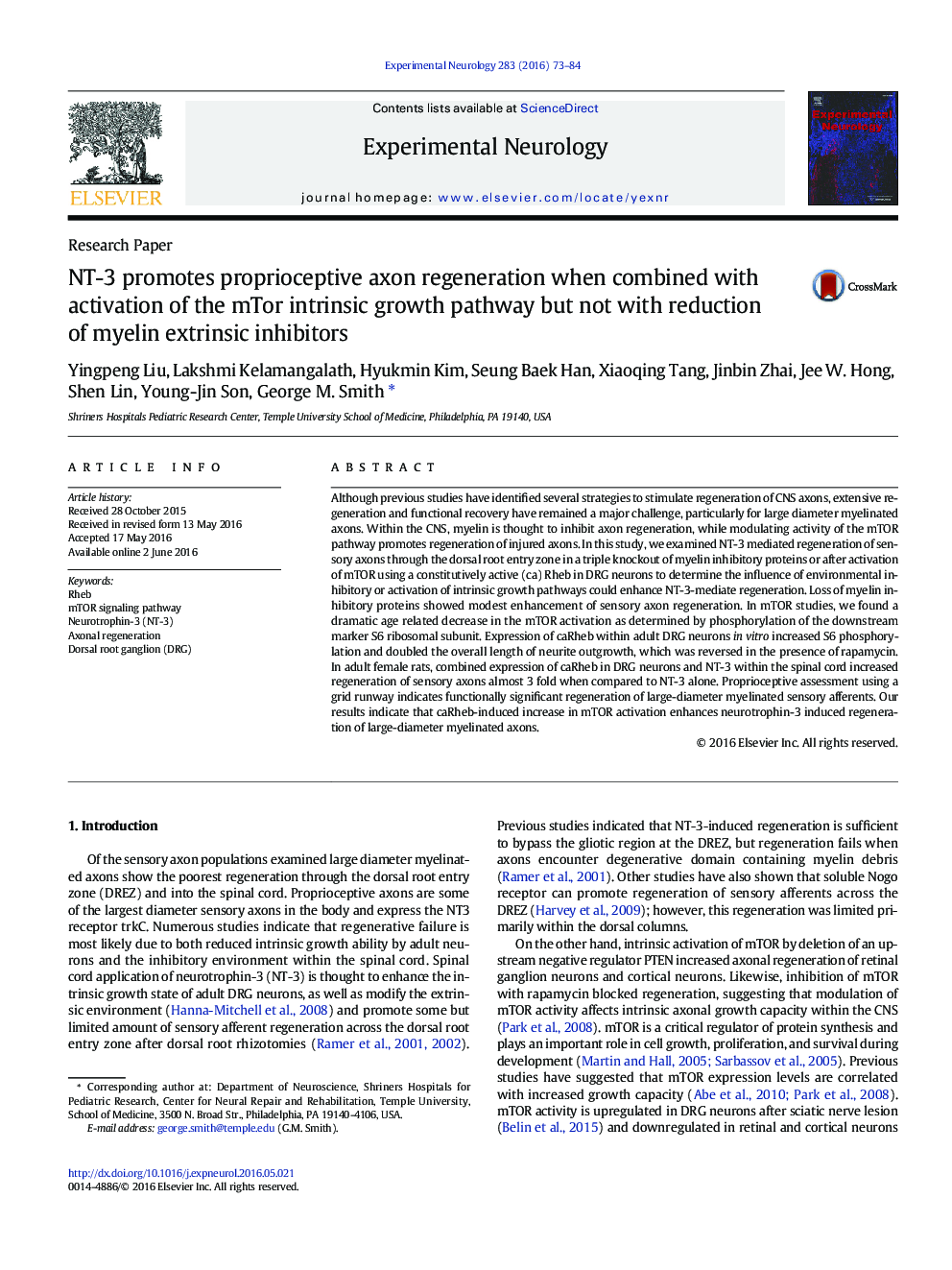| Article ID | Journal | Published Year | Pages | File Type |
|---|---|---|---|---|
| 6016868 | Experimental Neurology | 2016 | 12 Pages |
Abstract
Although previous studies have identified several strategies to stimulate regeneration of CNS axons, extensive regeneration and functional recovery have remained a major challenge, particularly for large diameter myelinated axons. Within the CNS, myelin is thought to inhibit axon regeneration, while modulating activity of the mTOR pathway promotes regeneration of injured axons. In this study, we examined NT-3 mediated regeneration of sensory axons through the dorsal root entry zone in a triple knockout of myelin inhibitory proteins or after activation of mTOR using a constitutively active (ca) Rheb in DRG neurons to determine the influence of environmental inhibitory or activation of intrinsic growth pathways could enhance NT-3-mediate regeneration. Loss of myelin inhibitory proteins showed modest enhancement of sensory axon regeneration. In mTOR studies, we found a dramatic age related decrease in the mTOR activation as determined by phosphorylation of the downstream marker S6 ribosomal subunit. Expression of caRheb within adult DRG neurons in vitro increased S6 phosphorylation and doubled the overall length of neurite outgrowth, which was reversed in the presence of rapamycin. In adult female rats, combined expression of caRheb in DRG neurons and NT-3 within the spinal cord increased regeneration of sensory axons almost 3 fold when compared to NT-3 alone. Proprioceptive assessment using a grid runway indicates functionally significant regeneration of large-diameter myelinated sensory afferents. Our results indicate that caRheb-induced increase in mTOR activation enhances neurotrophin-3 induced regeneration of large-diameter myelinated axons.
Keywords
Related Topics
Life Sciences
Neuroscience
Neurology
Authors
Yingpeng Liu, Lakshmi Kelamangalath, Hyukmin Kim, Seung Baek Han, Xiaoqing Tang, Jinbin Zhai, Jee W. Hong, Shen Lin, Young-Jin Son, George M. Smith,
